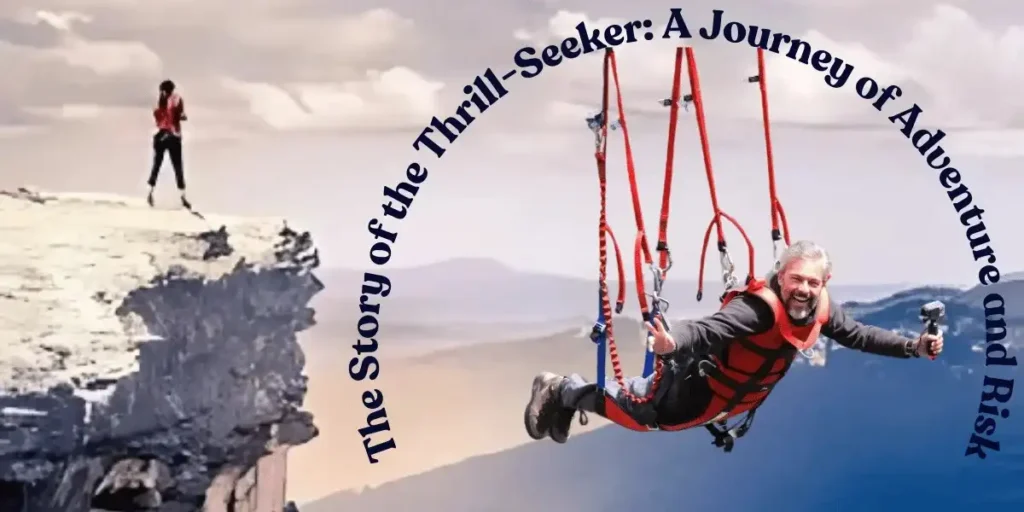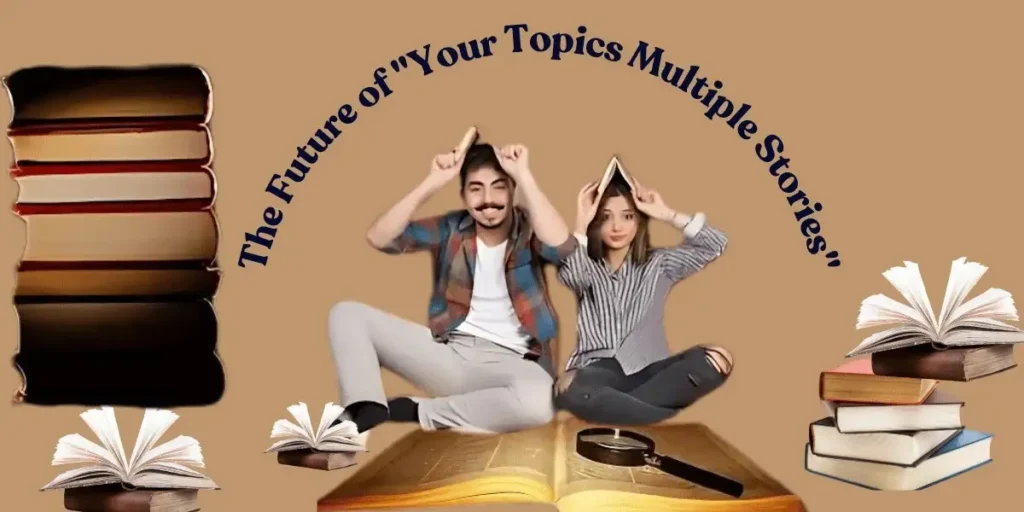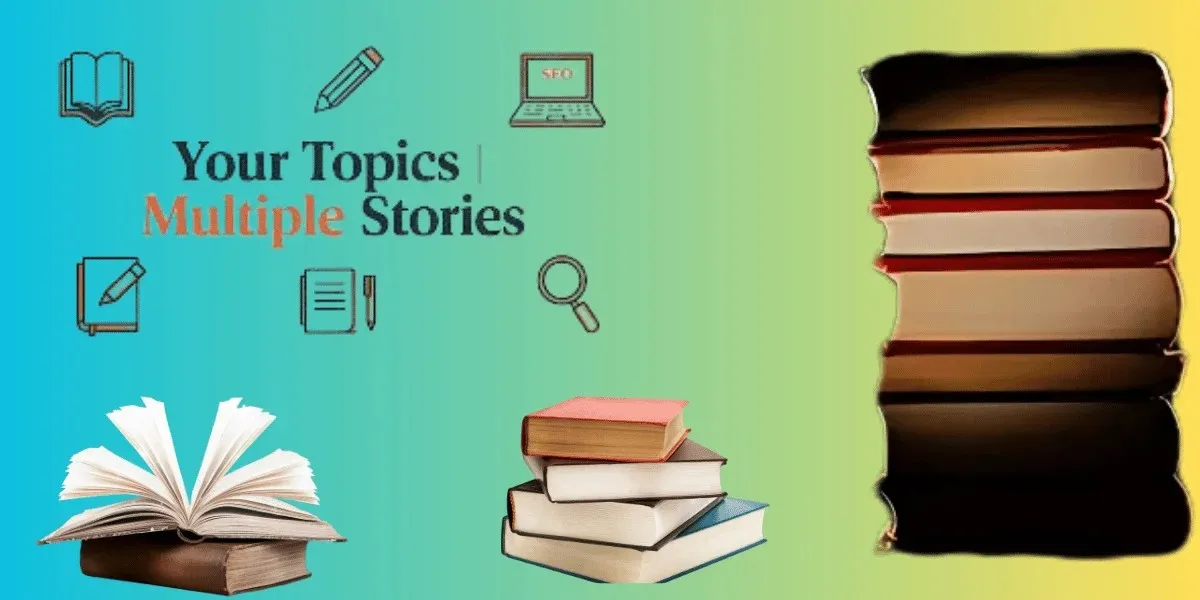In the world of storytelling, the power of diverse narratives is profound. Whether through books, movies, or any other medium, stories shape our understanding, entertain us, and help us explore the complexities of human experiences. “Your Topics Multiple Stories” offers a unique and captivating perspective on storytelling, providing a rich tapestry of different stories that cater to varied interests, backgrounds, and emotions. This article delves deep into the concept of “Your Topics Multiple Stories,” exploring various genres, themes, and narrative techniques that make this concept a valuable and enriching part of the modern storytelling landscape.
The Concept of “Your Topics Multiple Stories”
The idea behind “Your Topics Multiple Stories” lies in the belief that storytelling should not be confined to a single genre or topic. Instead, it encompasses a diverse collection of stories that explore different themes, emotions, and human conditions. This approach allows for the blending of genres, creating a more dynamic and layered narrative experience.
Stories have the power to evoke various emotions, from joy and excitement to sadness and introspection. By incorporating multiple stories that focus on different topics, a storyteller can engage a broader audience, ensuring that there’s something for everyone to relate to, enjoy, and learn from.
The Power of Diversity in Storytelling
One of the key aspects of “Your Topics Multiple Stories” is the importance of diversity. Diversity in storytelling can manifest in various ways, such as the inclusion of different cultures, perspectives, and experiences. It may also involve exploring different genres, such as adventure, romance, science fiction, fantasy, mystery, and drama.
When stories are diverse, they become more relatable to a wider audience. People from different walks of life can see themselves reflected in the narratives, helping them feel seen and understood. Furthermore, diverse storytelling promotes empathy, allowing people to walk in others’ shoes and understand experiences they might never encounter personally.
Cultural Diversity in Stories
Cultural diversity in storytelling opens the door to a multitude of perspectives. By incorporating characters from various ethnicities, backgrounds, and traditions, storytellers broaden the scope of their narratives. These stories can introduce audiences to new customs, beliefs, and social structures, enriching the overall storytelling experience.
For example, a story set in a rural village in Africa, juxtaposed with a tale set in a bustling city in Europe, offers two very different worlds. Yet, both can explore universal themes of love, loss, and resilience, making them accessible to a global audience.
Emotional and Psychological Diversity
Not all stories need to focus on happy endings or lighthearted themes. Some of the most powerful stories delve into the complexities of human emotions and psychological states. Whether it’s exploring the inner workings of a troubled mind, dealing with trauma, or celebrating personal triumphs, these stories resonate deeply with audiences who can relate to the emotional journey.
“Your Topics Multiple Stories” should include a mix of stories that examine the full range of human emotions—both light and dark. From tales of overcoming adversity to stories that highlight the beauty of simple, everyday moments, emotional diversity creates a profound impact.
Also read: Constitution Day of India | Connections Hints | Bellesa | BlueSkyPerezTechCrunch | ww55.affinity.net
The Story of the Thrill-Seeker: A Journey of Adventure and Risk

The Call for Adventure
The thrill-seeker is someone who lives for the rush of adrenaline and the excitement of new challenges. Their story is one of constant exploration and the quest for experiences that push the boundaries of what is comfortable or safe.
The Early Signs of a Thrill-Seeker
From a young age, thrill-seekers are often drawn to activities that others might shy away from. Whether it’s climbing trees, jumping from high places, or pursuing extreme sports, their desire for adventure starts early in life.
The Pursuit of Greater Risks
As they grow older, thrill-seekers seek increasingly dangerous activities. From skydiving and bungee jumping to mountaineering and deep-sea diving, the stakes get higher, and the need for excitement grows.
The Drive for Personal Growth
For many thrill-seekers, the pursuit of extreme experiences is more than just a desire for fun—it’s a path to personal growth, overcoming fears, and discovering one’s limits.
Genres: The Building Blocks of “Your Topics Multiple Stories”
Genres are the backbone of storytelling, and when combined creatively, they offer an endless array of possibilities. “Your Topics Multiple Stories” embraces the idea of genre fusion, encouraging storytelling that crosses traditional boundaries. Below are some key genres that often feature in this concept:
Fantasy and Science Fiction
Fantasy and science fiction are genres known for their ability to transport audiences to alternate realities. These genres allow for limitless imagination, where anything is possible—from magical realms to futuristic societies. Incorporating both genres into a single narrative, or creating separate stories under the same umbrella, invites audiences to explore different worlds and challenge their perceptions of reality.
Mystery and Thriller
Mystery and thriller stories captivate audiences with suspense and intrigue. These genres focus on solving puzzles, uncovering secrets, and exploring the darker side of human nature. Whether it’s a detective unraveling a crime or a psychological thriller that keeps you on the edge of your seat, these stories add excitement and tension to “Your Topics Multiple Stories.”
Romance and Drama
Romance and drama often provide the emotional heart of a story. These genres focus on relationships, whether romantic, familial, or platonic. Stories in this category explore the complexities of human emotions, personal growth, and the impact of love on individuals. Romance and drama provide a compelling way to engage audiences emotionally.
Historical and Biographical
Historical and biographical stories offer a window into the past, allowing audiences to learn about real events and figures. These stories may take the form of documentaries, novels, or fictionalized accounts of actual events. By telling stories rooted in history, “Your Topics Multiple Stories” can offer valuable lessons and insights while highlighting significant moments in time.
Adventure and Action
Adventure and action stories are synonymous with excitement. They transport readers or viewers to places of danger, exploration, and heroism. Whether it’s a quest for treasure or a high-stakes mission to save the world, these stories are designed to thrill. Combining action with other genres, such as romance or drama, creates a dynamic narrative experience.
Employ Transitional Elements
Transitional Elements in Writing
Transitional elements are words, phrases, or sentences that guide readers through a text smoothly. They connect ideas, paragraphs, or sections, ensuring a logical flow in your writing. Examples include “however,” “on the other hand,” and “furthermore.” By using transitions effectively, you help readers easily follow your arguments or narrative, creating a seamless reading experience.
How Transitional Elements Enhance Clarity
Transitional elements enhance clarity by signaling shifts in ideas, adding coherence to the text. They can introduce a new point, contrast information, or reinforce a concept. This structure prevents disjointed thoughts, making it easier for readers to understand complex arguments and stay engaged with the content.
Types of Transitional Elements
There are several types of transitional elements: addition (e.g., “moreover”), contrast (e.g., “nevertheless”), cause and effect (e.g., “therefore”), and time (e.g., “next”). Using the appropriate transitional element depends on the relationship between ideas you wish to convey, making your writing more fluid and organized.
Narrative Techniques for Engaging Stories
“Your Topics Multiple Stories” thrives not only on diverse topics but also on the techniques used to tell the stories. Below are a few narrative techniques that enhance storytelling:
Multiple Points of View
One of the most engaging ways to tell a story is through multiple points of view. By offering different perspectives, the storyteller can provide a richer, more layered understanding of the plot. Characters may perceive events differently, which helps the audience understand the complexity of the situation and makes the story more engaging.
Nonlinear Storytelling
Nonlinear storytelling involves telling the story out of chronological order. This technique is often used to create suspense or highlight themes of memory, time, or fate. By jumping back and forth in time, the narrative unfolds in unexpected ways, keeping the audience on their toes.
Character Development
Strong character development is crucial for any story. In “Your Topics Multiple Stories,” characters must undergo growth, change, or struggle with their personal dilemmas. The characters should evolve in response to the events they face, allowing the audience to form an emotional connection with them. Whether they are heroes, antiheroes, or villains, well-developed characters are at the heart of any great story.
Symbolism and Metaphor
Symbolism and metaphor enhance a story’s depth and meaning. By using objects, actions, or themes to symbolize something greater, storytellers can add layers of interpretation. For example, a bird in a cage might symbolize freedom or the lack thereof, enriching the audience’s experience of the story.
Why “Your Topics Multiple Stories” Matters
The concept of “Your Topics Multiple Stories” matters because it reflects the diversity of human experience. Every person’s story is different, and by embracing this variety, we create a more inclusive world. A single story may not be able to capture the essence of every experience, but multiple stories can.
Furthermore, diverse storytelling challenges stereotypes, promotes empathy, and broadens the scope of what’s considered “mainstream.” It empowers marginalized voices and provides a platform for underrepresented stories to be heard.
Also read: Modern Mullet | Dreamplay1 Login | CouchTuner | KissAsian | Instafest App
The Future of “Your Topics Multiple Stories”

As technology continues to evolve, so does the landscape of storytelling. Digital platforms, such as streaming services, podcasts, and e-books, have made it easier than ever to share a multitude of stories across different genres. This trend will likely continue in the future, with more and more creators embracing the idea of diverse storytelling.
Moreover, interactive storytelling—where the audience can choose how the story unfolds—is becoming increasingly popular. This kind of storytelling allows individuals to immerse themselves in the narrative, making the experience even more personal and diverse.
Create Original Views
Explore Unconventional Perspectives
To create original views, step away from traditional thinking and explore new, unconventional perspectives. By questioning established norms and considering different viewpoints, you can discover innovative ways of thinking.
Draw Inspiration from Diverse Sources
Incorporate ideas from various disciplines, cultures, or experiences to bring freshness to your perspective. This cross-pollination of ideas helps in forming original views by blending different influences.
Challenge the Status Quo
Don’t be afraid to challenge existing ideas or question accepted truths. By actively engaging with the world in a critical manner, you can develop original, thought-provoking viewpoints that stand out.
Embrace Experimentation
Experiment with different methods, approaches, or creative exercises. Trial and error can lead to new discoveries and fresh insights, contributing to your originality.
Conclusion
“Your Topics Multiple Stories” is more than just a collection of different narratives. It is a celebration of diversity in storytelling, a recognition that the human experience cannot be confined to one story or genre. By embracing multiple stories from different cultures, genres, and perspectives, we create a more inclusive and engaging world of storytelling.
The power of storytelling lies in its ability to connect people, evoke emotions, and inspire action. Through diverse and varied stories, we can learn, grow, and expand our understanding of the world. So, whether you’re telling stories from your own life, exploring new genres, or discovering tales from other cultures, remember that every story has the power to shape the world.
In embracing “Your Topics Multiple Stories,” we celebrate the beauty of storytelling in all its forms, ensuring that every voice, experience, and emotion is heard.
Frequently Asked Questions (FAQ)
1. How can I make my storylines more connected?
To create connected storylines, make sure each plot or character thread has a clear purpose and interrelates with others. Use common themes, locations, or events to link the story arcs, ensuring that all narrative elements contribute to the bigger picture.
2. How can I improve my character development?
Good character development involves creating multi-dimensional characters that grow throughout the story. Ensure that they face challenges, learn from their experiences, and evolve in a way that aligns with the themes of your narrative.
3. Why is diversity important in storytelling?
Diversity in storytelling broadens perspectives, making stories more relatable and inclusive. It encourages empathy, allows for richer narratives, and engages a wider audience by showcasing different cultures, emotions, and experiences.



